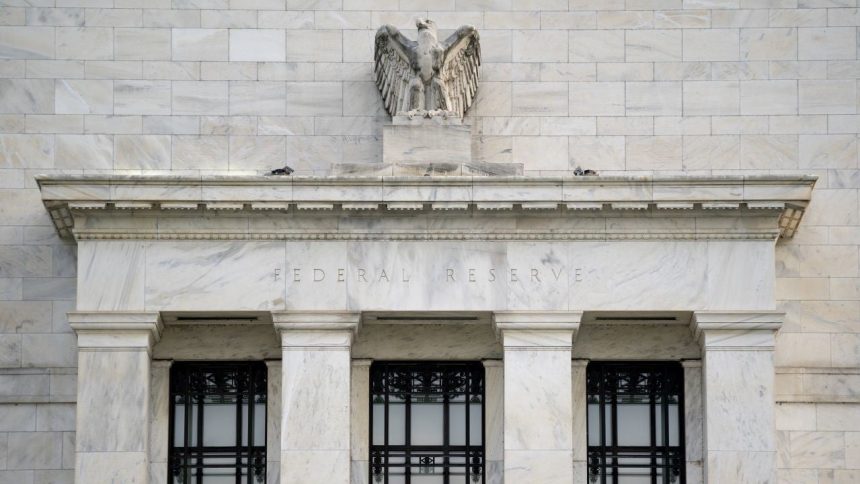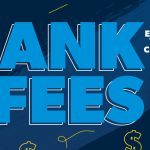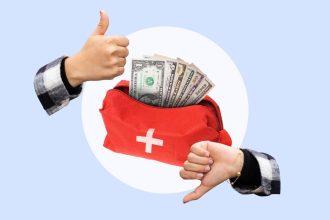Bloomberg Creative/Getty Images
July Fed meeting
On July 31, 2024, the FOMC decided to hold steady on interest rates. The benchmark rate remains at 5.25-5.5 percent.
Most personal loans have fixed rates, so current borrowers do not need to worry about their interest rates changing. Borrowers in the market for a personal loan should prepare for rising interest rates, but there are things you can do to mitigate those costs.
“Rising interest rates aren’t good news for those in the market to borrow,” says Greg McBride, Bankrate’s chief financial analyst. “But borrowers with strong credit will continue to find very competitive terms even in the face of another large Fed rate hike. It is important to compare different lenders to get the best deal.”
How does the Fed affect existing personal loans?
The federal interest rate set influences the prime interest rates lenders offer to new borrowers. The average personal loan interest rate was 10.28 percent at the beginning of 2022 and has risen steadily since. As the Fed introduced rate hikes throughout 2022 and 23, the average personal loan rate also increased.
The average personal loan interest rate as of August is 12.38 percent. Though further federal funds rate hikes are unlikely, interest rates remain at historic highs.
How the Fed impacts fixed vs. variable-rate loans
The good news for borrowers is that personal loans are fixed-rate loans, meaning the interest rate remains unchanged from origination to pay-off. Borrowers with a fixed-rate personal loan will not see changes to their interest rate or monthly payments when the Fed raises or lowers rates.
When it comes to fixed loans, your interest rate should remain unchanged and the overall cost of your loan will be unaffected, no matter the market conditions. That means if you locked in a low-interest fixed-rate personal loan, it won’t change based on the federal rate.
Those with a variable-rate personal loan are more likely to see their interest rate increase with the federal rate. That being said, if you have a variable-rate loan it may be worth transferring your current balance to a fixed-rate debt consolidation loan since rates have shot up at unprecedented speeds in recent months.
Will personal loan interest rates start to decrease?
Powell indicated that rates are likely to increase this year, although at a slower pace than past increases. Fed policymakers refer to recent rate decisions as “skips.” Rates aren’t decreasing and there’s no definitive answer on whether they’ll begin to anytime soon.
Mark Hamrick, Bankrate senior economic analyst and Washington Bureau Chief, has predictions. Based on the Fed’s 2 percent inflation target coupled with the CPI trends, he feels it’s likely that the Fed isn’t ready to declare “mission accomplished” when it comes to rate hikes. But he’s confident that it’s on the right track.
“If inflation has peaked, as it appears to have done, and if the Fed is nearly finished (or finished) raising rates, then borrowers will be seeing rates peak as well,” he adds. “Even so, the future trajectory of rates is uncertain, meaning that rates across the spectrum may be elevated for some time.”
Due to the recent macroeconomic trends and the Fed’s previous hikes, Hamrick predicts that the Fed’s increases may be slowing. “With 500 basis points of tightening behind it dating back to March of last year, we can say with great certainty that the job of boosting rates is nearly finished, but even the Fed doesn’t yet know exactly what it will do at future meetings,” Hamrick says.
Oliver Rust, head of product at Truflation writes that we’re more likely to have an idea as to potential decreases by the end of the year. “Prior to the May inflation announcement, the assumption was that the Fed would hold steady until the summer break and re-evaluate in September again. I think this is still likely to happen.”
How can you get an affordable loan despite high interest rates?
Personal loan interest rates are getting more expensive overall, but the federal rate is not the only thing affecting your loan’s cost. You can do several things to help get the best deal possible, including improving your credit score, shopping around for the best lender and applying with a co-borrower.
Here are some of the steps you can take to get the best deal possible on your personal loan:
Bottom line
Because personal loans are fixed-interest products, current borrowers will not be affected by the Fed’s rate hikes. While interest rates on new loans are likely to keep rising, new borrowers can still qualify for competitive rates by improving their credit and shopping for the best deals. If you are interested in consolidating debt from a variable interest product, debt consolidation loans could offer a cost-effective solution.
Frequently asked questions
-
The Federal Reserve is the central banking system in the United States. Its primary function is to promote and support a strong U.S. economy by regulating financial markets, managing the money supply and setting interest rates.
-
The next Federal Reserve Open Market Committee meeting is scheduled for Sept. 17 and 18, 2024.
Read the full article here














